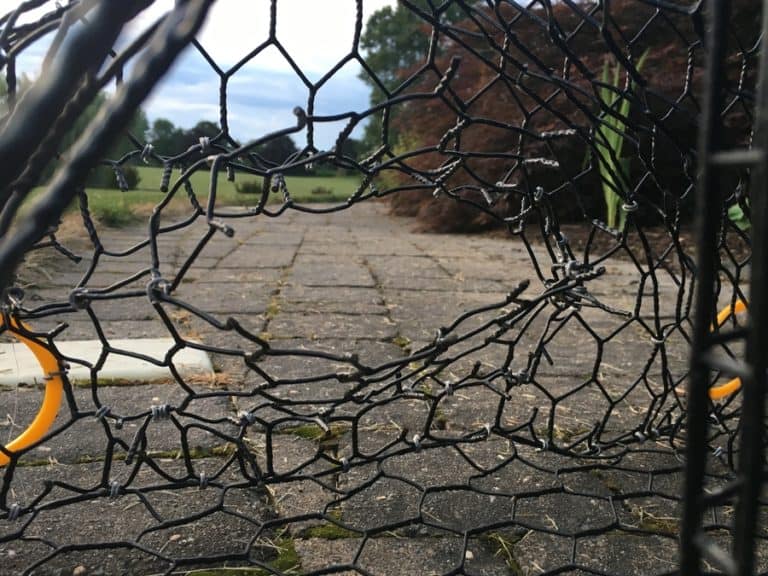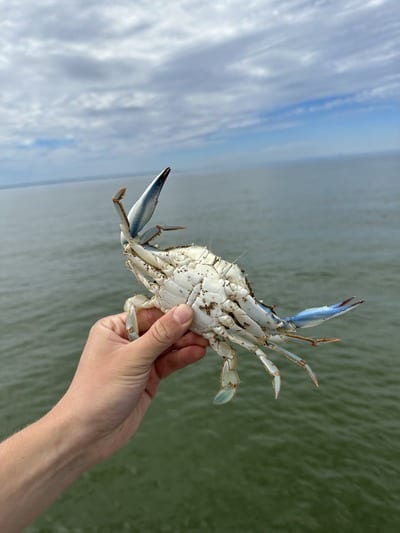How Crab Pots Work (With Pictures!)
A common thing most newbie crabbers fail to understand is how a crab pot functions. Knowing this won’t only make you a more knowledgeable crabber, but it will also make you realize how to make certain adjustments to up your chances of catching a crab dinner.
So, how do crab pots work? Crab pots work by using the crab’s instincts to trap itself. It lures the crab with bait into the large cage through strategically placed openings that they can enter, but cannot escape.
But how do the openings work? Why can’t the crabs just leave the cage? How does this help me catch more blue crabs? Let’s dive into these questions & more.
How Crab Pots Work (In Detail)
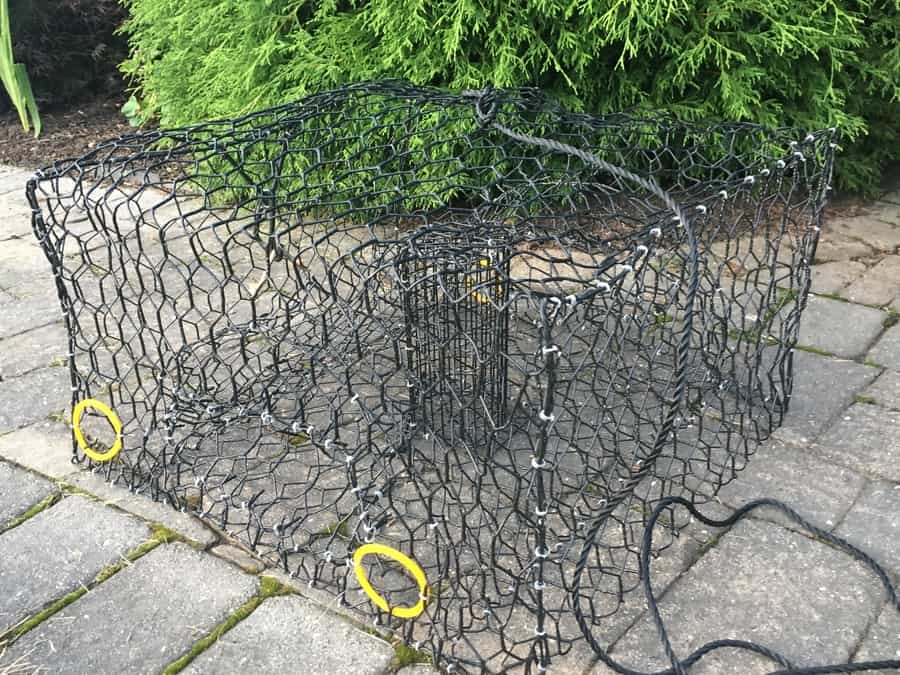
That cube-shaped mess of wire above is a recreational crab pot. It’s designed to trap Blue Crabs, and used in calmer waters such as rivers, canals, etc.
It may seem confusing looking at the entire thing, I get it. Let’s go over each and every part inside and outside of the crab trap to fully understand how it works.
With the Holiday Season coming around, I put together a gift guide for anyone who loves to go crabbing. I was tired of generic crabbing gift ideas with a graphic of a crab on a mug or t-shirt. Instead, I wanted to make a list of what a crabber actually needs and will end up buying themselves.
If you’re interested, read my article: Gift Ideas for Crabbers (Stuff they’ll actually use!).
The Crab Pot’s Exterior
Wire Mesh
One thing you might notice about this trap is how small the wire mesh is. The holes are about an inch in diameter, the perfect size for catching Blue Crabs.
If you were after Dungeness Crabs, a type of crab that grows to be much larger than most Blue Crabs, you would buy a cage with a larger, more durable wire mesh.
You might not be able to tell from just the picture, but the mesh is flimsy and moldable. If I wanted to, I could form and shape the cage as I could with chicken wire. This will come in handy later.
This is a big step down from the oversized crab traps you see on Deadliest Catch. This is because the crew on the TV show is on the Berin Straight, a stretch of icy water that divides Russia and Alaska. There the species of crabs are much larger, sometimes reaching a carapace length of 11 inches. That is twice the size of a blue crab!
Because of this, the cage needs to be MUCH larger than our puny 2 feet by 2 feet by 1-foot crab trap, which is actually one of the larger Blue crab pots.
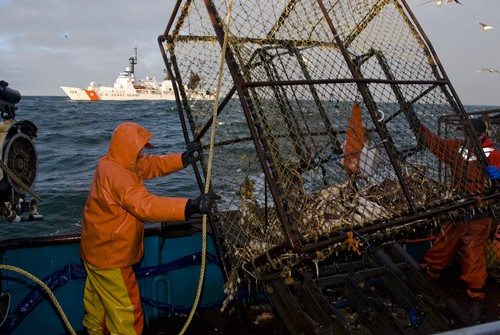
The key takeaway here is to know what size mesh you should buy.
If you’re on the West coast, purchase a trap with a larger and thicker wire mesh. This will withstand the size and strength of Dungeness Crabs.
If you’re on the East coast, you can get away with buying a trap with smaller, less durable wire mesh because Blue Crabs are much weaker than Dungeness Crabs.
I’ve spent hundreds of dollars on crappy crab traps to get to the gear I’m happy with and use to this day. So, I know a thing or two about which traps you should use for Dungeness and Blue Crabs, and which you should avoid. If you want to learn from my mistakes and avoid wasting money on junk traps, I recommend you browse my Recommended Gear page.
Cull Rings
You probably noticed the bright yellow rings near the opening of the crab trap. They might not seem like much, but these are very important to have on a crab trap.
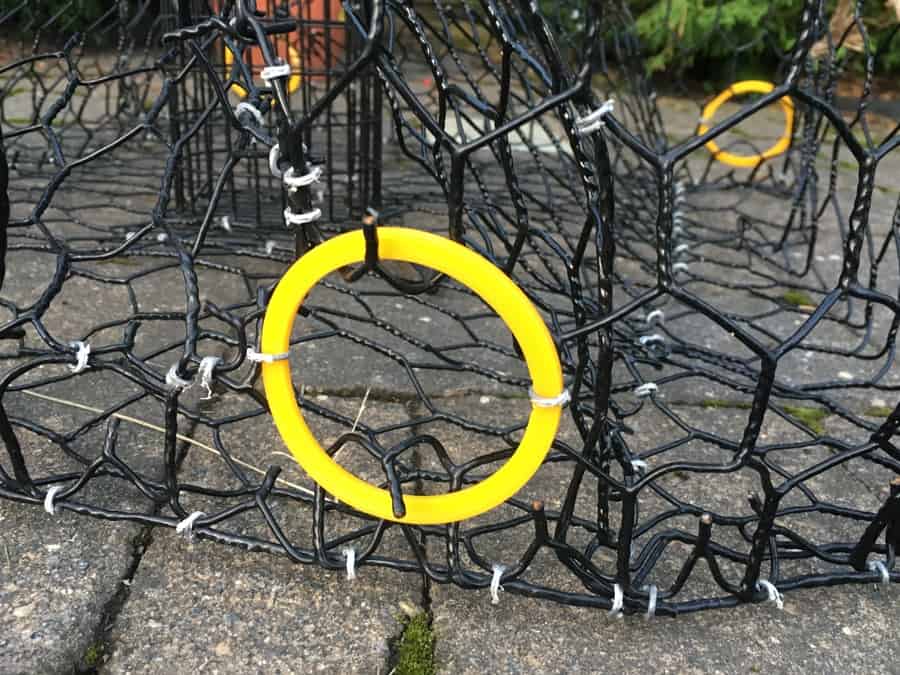
Also known as an escape ring, these 2 and 5/16 inch rings (4 and 1/2 if you’re after Dungeness Crabs) save you valuable time and helps the crab population.
Also, you’re most likely going to be fined if caught using a crab pot without a cull ring in most US states. Check with your state’s crab pot regulations for more information.
It’s designed to allow small crabs to escape your trap and leave more run for bulkier, meatier crabs.
This saves time while harvesting, giving you fewer crabs to measure. Various studies show that a 2 5/16 inch cull ring is very effective in releasing crabs less than 5 inches, which is the current minimum size in Maryland (Source).
The only con to this is female crabs of legal size are more likely to escape. This shouldn’t be a problem unless you live in a state where catching females is legal such as South Carolina.
Rope & Marker
It’s common knowledge that crab pots have a rope and marker.
These overlooked features in a crab pot show you where your trap is at all times and makes it easy to haul it to the surface.
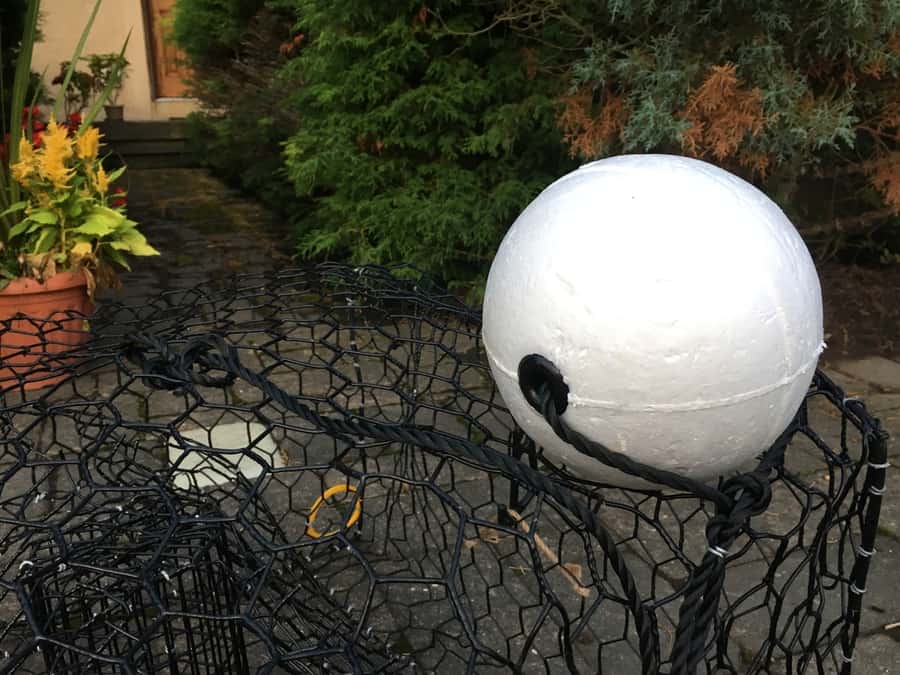
You may see in the photo that my string is thin and short, no longer than 10 feet. I do most of my crabbing in a shallow canal, where a long rope is not necessary.
Check with the water depth where you plan on going crabbing. You want a length of rope 15 feet longer than the depth of the water to account for high tide.
If you were crabbing in the bay or a river, you would need a thick, durable rope and a very noticeable marker. This is especially important in large, public waterways to avoid collisions or find a trap moved by a strong current or storm.
My buoy is a small, styrofoam ball. This is perfect for a recreational crabber like me. If I lived in certain states such as Florida, I would be required to paint a large letter R on my marker to make it clear it’s a recreational trap.
I’ve heard of a few horror stories of crabbers getting fined hundreds of dollars for incorrect buoys and markers by DNR officers. This makes me upset, as there are so many regulations on crabbing gear that changes most years and differs by state. How do they expect crabbers to keep up with it all? I want to help you out, so I compiled a directory for each state’s crabbing regulations, which you can view here. Be sure to bookmark it to keep up with your state’s and nearby state’s crabbing regulations to avoid being fined!
Latch
Lastly, for the exterior of the crab trap, is the latch. It comes in handy for emptying out the caught crabs.
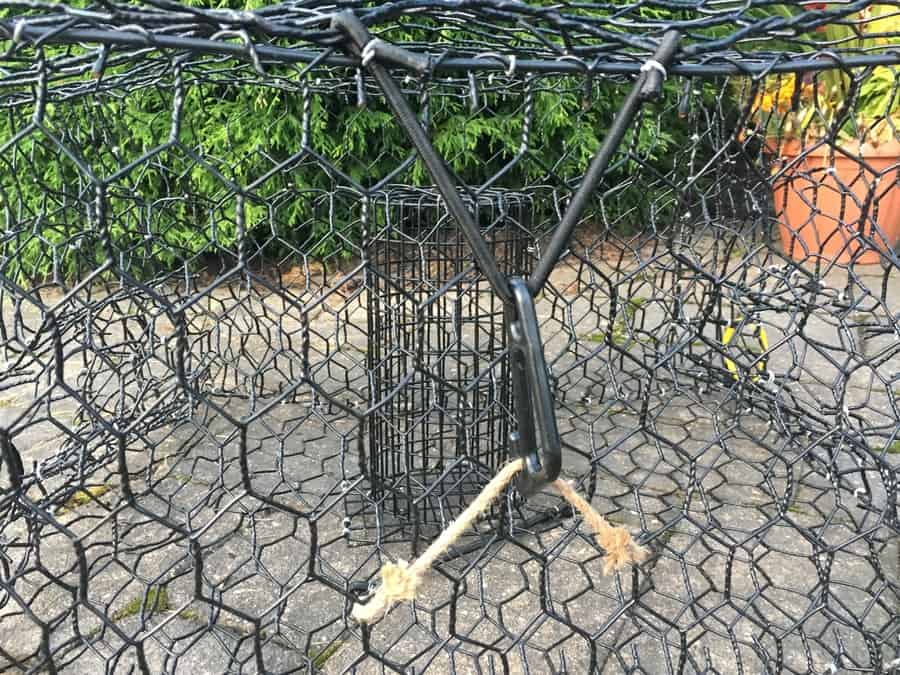
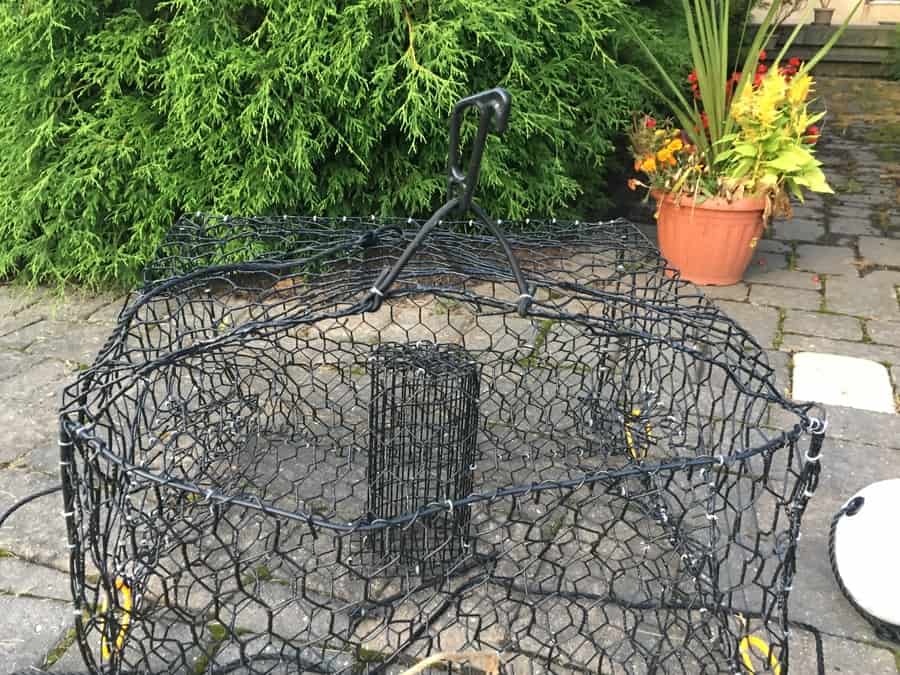
The latch on my trap is very makeshift. It’s just one corner of the cage mesh that isn’t bound together. It locks with a hook on the end of a bit of parachute cord clipped to some rope.
On other traps, this might be a hinged door or something similar. Every good crab pot has one, and it makes harvesting your crabs much simpler.
Interior
Now we’re getting down to the more important features of the trap. Let’s look into how a crab pot lures crabs and keeps them in the cage.
Leads
This is the second most important part of a crab pot (bait being the most important). The opening allows crabs to easily enter the crab trap, but not be able to leave.
This is because to the ingenious shape of the leads. Let me show you a close-up picture.

The opening starts low to the ground where the crabs can easily start to enter. From there it’s a steady slope upwards until it abruptly ends. It’s not a long drop, but one large enough for the crabs to be unable to climb back out the way they came.
You’ll find this as the case for most crab pot entrances for the majority of commercially harvested crab species. It’s cheap, simple, and very effective.
My crab trap is a little different than most traps because it has leads on the inside of the trap. Let me show you a picture.
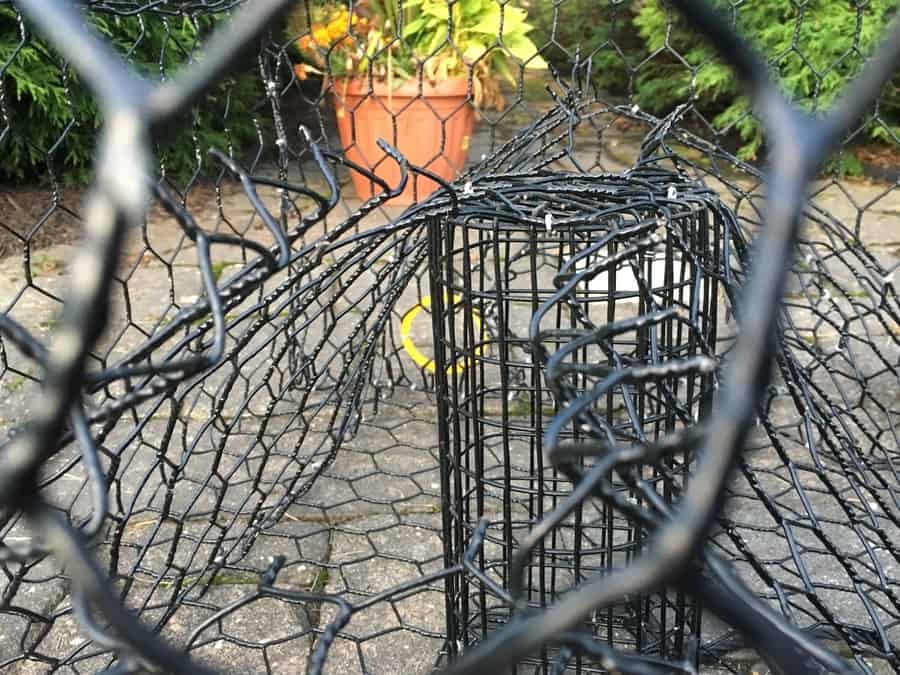
Just above the bait box, there are two more leads that access the top compartment of the crab trap.
This is where the design of the trap truly outdoes itself. It uses the crab’s instincts to work against it.
When the crab realizes they’re stuck after crawling through the two openings, it tries to swim upwards away from harm. The only way up is through these two openings into the parlor.
Once they squeeze through, they can’t physically fit back through the openings. The crab is officially trapped and will wait there until you come to harvest your crab pots.
Bait Box
The bait box is the most important part of the trap. If there’s something wrong with the bait, nothing in the trap works.
Most crab pots come with a built-in bait box. Otherwise, recreational crabbers purchase one separately and attach it to the cage with zip ties.
What you stuff it with is entirely up to you, it just needs to be something meaty and smelly. Raw chicken does wonders, and so does raw fish. You can get creative with squid, clams, bull lips, and even cat food.
Just make sure the meat is smelly (not rancid) and tough. You want to appeal to the crab’s sense of smell and last a few days while being feasted upon by an endless amount of crabs.
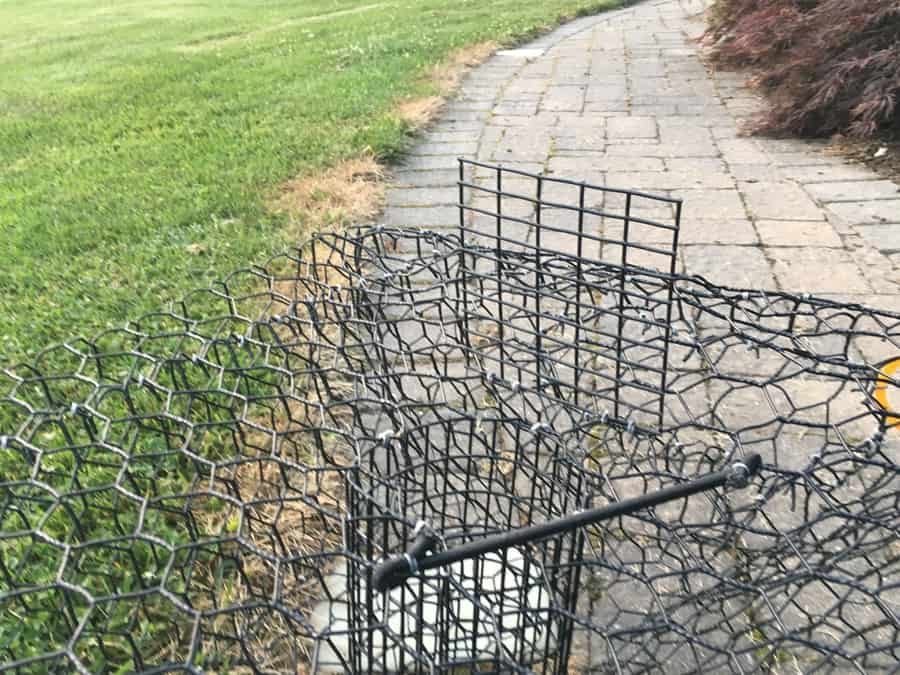
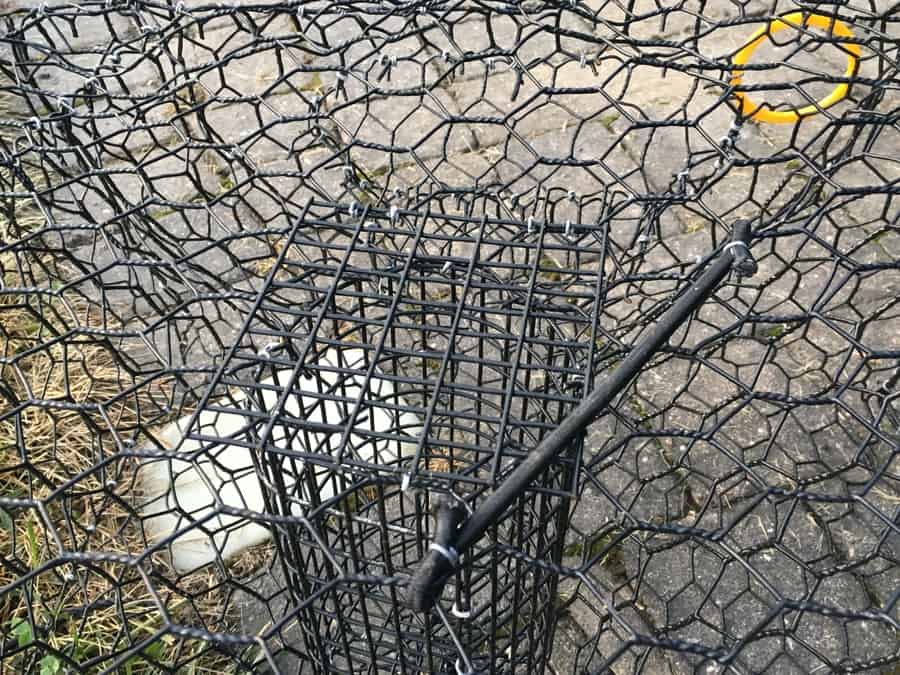
My bait box is as simple as it gets. A medium-sized cylinder with a small hatch to cover one end. It’s held tight under a small piece of paracord and stays tight until I refill it.
That’s it! That is exactly how a crab pot works in extreme detail. Let me know if I missed anything below in the comments.
Still curious about crabbing with a crab pot? I made a step by step guide that makes using the trap simple and enjoyable
Related Questions
How do you add bait a crab pot?
Most crab pots come with a tiny bait cage where you can add a variety of baits, including chicken, fish, or other oily meats. If your trap did not come with one, you can purchase one on Amazon or from your local bait & tackle shop.
How long do you soak crap pots?
It’s recommended that you leave crab pots to soak for 6-36 hours, depending on how soon you want your crabs.
With enough bait inside the trap, it can last for days at a time. Just be sure to make sure there is enough, otherwise, the crabs might eat one another.
I created a whole article tackling this question, which you can read here.
Do crab pots sit on the ocean floor?
This is a common misconception to anyone who’s unfamiliar with crab traps.
Yes, crab pots sit on the ocean floor. Because crustaceans look for food on the sea floor, it’s best to set crab pots on the very bottom.



